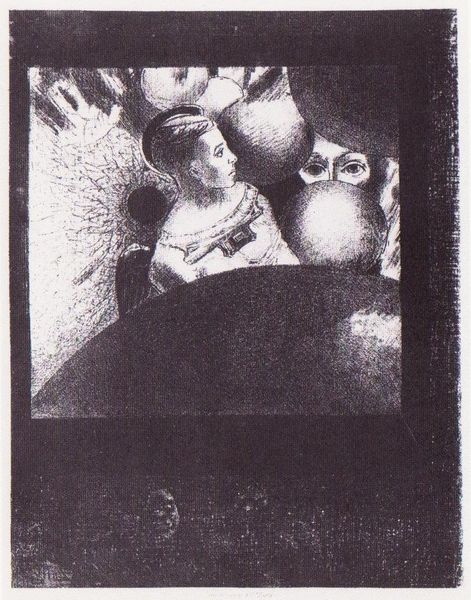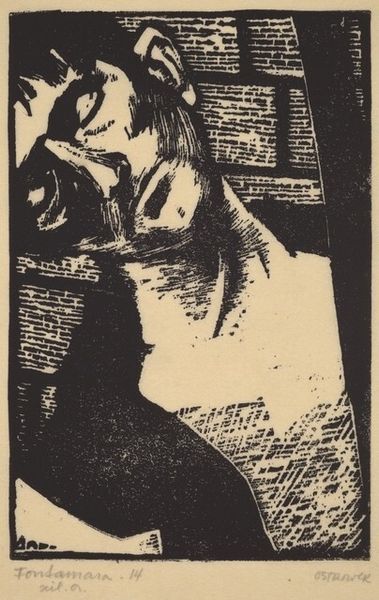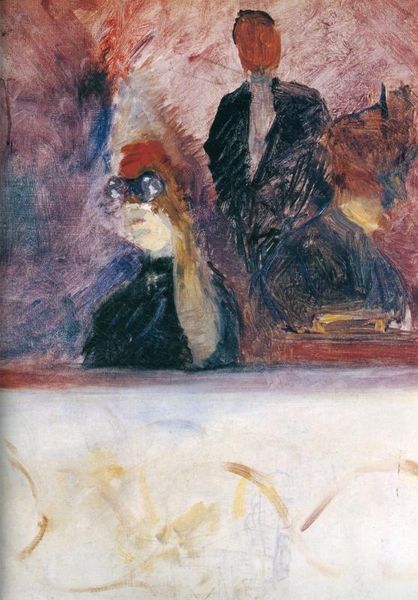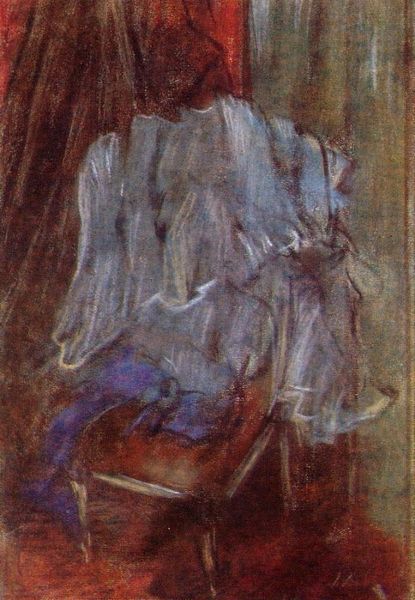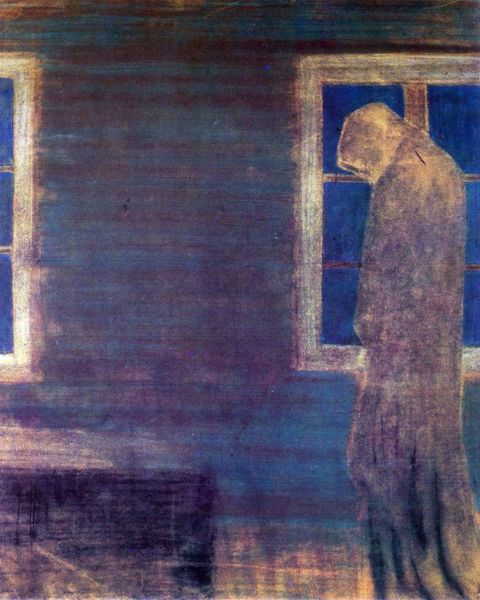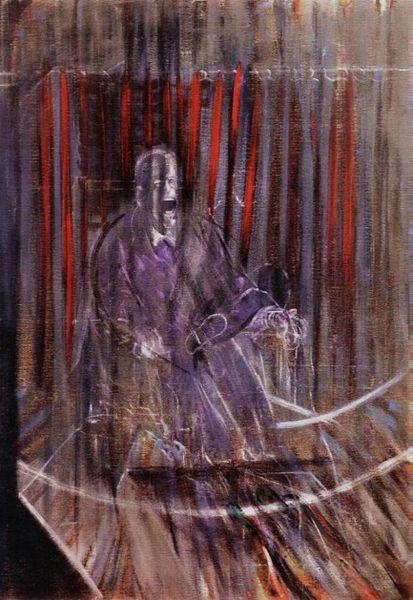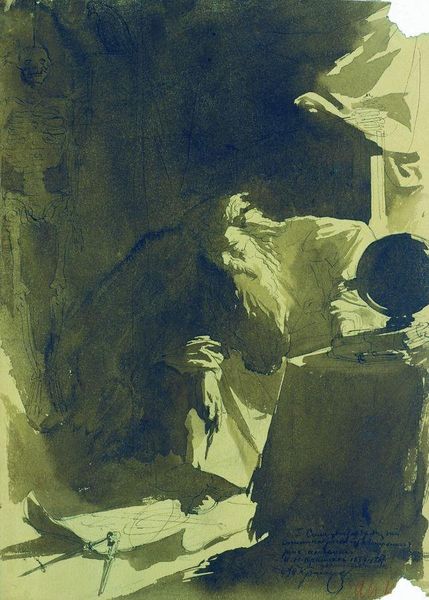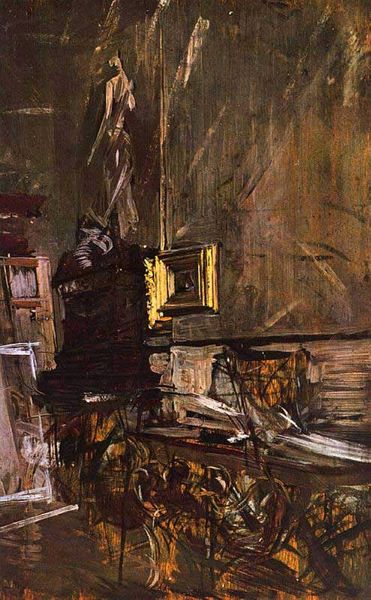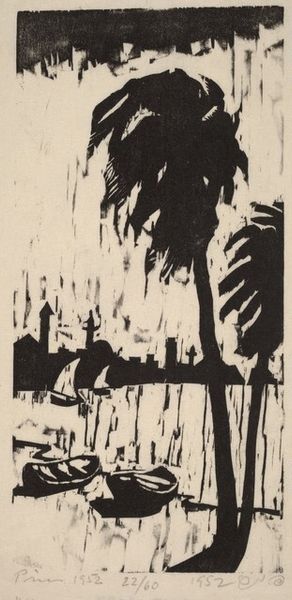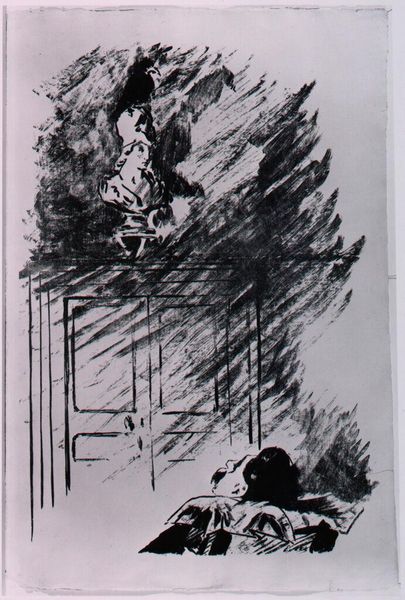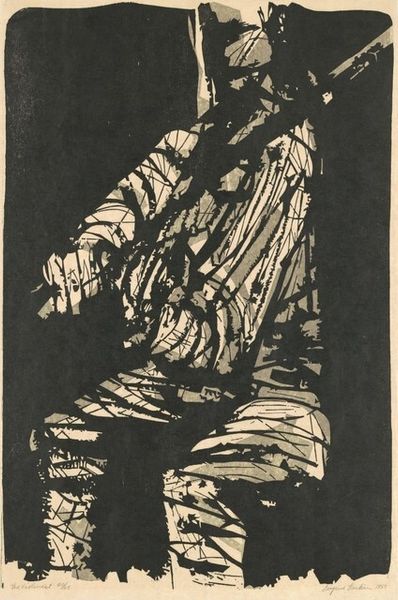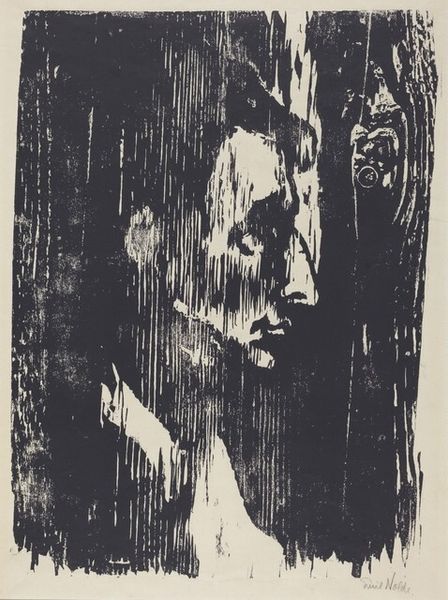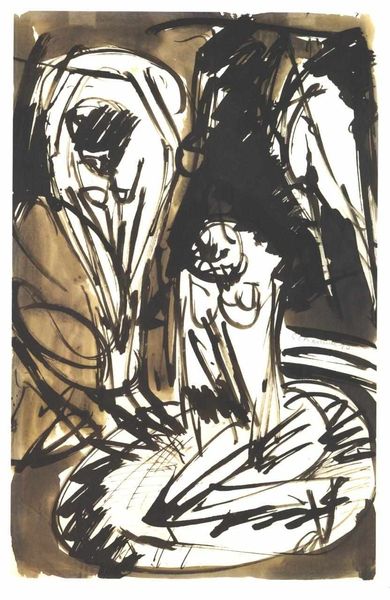
Dimensions: 30.48 x 24.38 cm
Copyright: Public domain
Editor: Here we have Paul Klee's "Flowers in Stone," a 1939 watercolor and ink drawing. The palette is very subdued and the figure almost seems to disappear into the dark background. What narrative do you see playing out in this piece? Curator: Given the historical context – 1939, the eve of World War II – the muted colors and the figure's facelessness are powerful. Klee was deeply affected by the rise of Fascism and was even dismissed from his teaching position under Nazi pressure. Editor: That’s interesting; the “flowers” of the title suddenly feel ironic. Curator: Exactly. What appears decorative might be a veiled critique. The "flowers" could symbolize lost beauty, crushed under the weight of oppressive regimes. And consider the figure. They're turned away, almost hiding. Is this a self-portrait reflecting Klee’s own sense of vulnerability and forced silence? Editor: It’s almost like they’re being consumed by the shadows. What about the stone element? Is that related to this political oppression? Curator: "Stone" might signify the coldness and rigidity of political structures, the way authoritarianism petrifies society and individual expression. Look at how the stone or rock is almost an embrace, perhaps even protective, shielding and restricting simultaneously. It highlights the internal struggle. Editor: It is fascinating to think about art as a mirror of these massive socio-political events. Now I can see Klee less as this abstract figure and more of an artistic champion struggling to make a difference. Curator: And that's how art history intersects with our understanding of the human experience. This painting speaks volumes about resisting oppression, even through quiet contemplation.
Comments
No comments
Be the first to comment and join the conversation on the ultimate creative platform.
